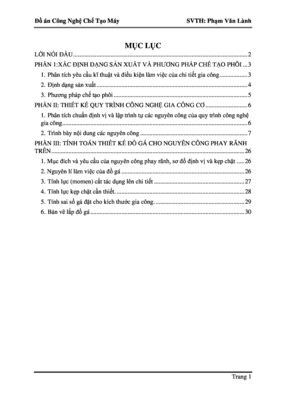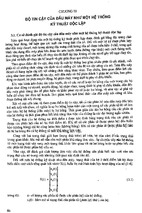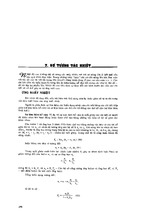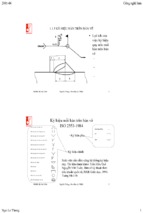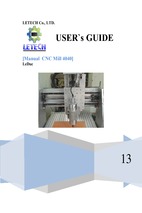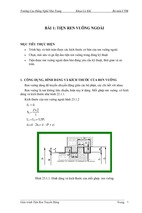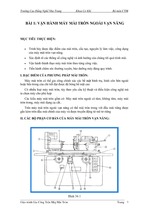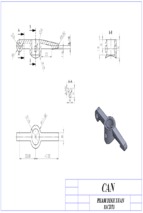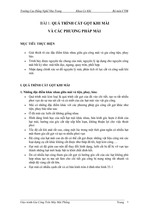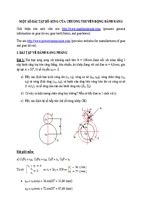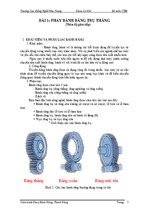POLYMER
PROCESS
ENGINEERING
POLYMER
PROCESS
ENGINEERING
Richard G.Griskey Ph.D.,P.E.
Institute Professor (Emer.)
Chemistry and Chemical Engineering
Stevens Institute of Technology
SPRINGER-SCIENCE+BUSINESS MEDIA, B.V.
Cover design: Edgar Blakeney
Copyright © 1995 Springer Science+Business Media Dordrecht
Originally published by Chapman & Hali in 1995
Softcover reprint ofthe hardcover 1st edition 1995
Ali rights reserved. No part ofthis book covered by the copyright herean may be reproduced or used in any tonn or by any means--graphic. electronic.
mechanical. including photocopying, recording. taping, or infonnation storage and retrieval systems--without the written permission ofthe
publisher.
Of
2
3 4 5 6 7 8 9 XXX OI 00 99 98 97
Library ofCongress Cataloging-in-Publication Data
Griskey, Richard G.
Polymer process engineering / Richard G. Griskey.
p.
cm.
Includes bibliographical references and index.
ISBN 978-94-010-4257-4
ISBN 978-94-011-0581-1 (eBook)
DOI 10.1007/978-94-011-0581-1
L Polymers. 1. Title.
TPI087.G75
1995
94-31630
668.9--dc20
CIP
To Dr. Pauline B. Griskey
my inspiration, my best friend,
and my dear wife
CONTENTS
Preface
Chapter 1
Polymer Basics, Structural Characteristics,
Characterization
Chapter 2
Thermodynamics of Solid, Molten, and
Thermally Softened Polymer Systems
viii
1
48
Chapter 3
Applied Polymer Rheology
105
Chapter 4
Heat Transfer in Polymer Systems
141
Chapter 5
Mass Transfer in Polymer Systems
223
Chapter 6
Chemical Reaction Kinetics in Polymer Systems
249
vi
Contents
vii
Chapter 7
Polymer Processes: Extrusion
278
Chapter 8
Injection-Molding Systems
311
Chapter 9
Blow Molding, Rotational Molding, and Other Molding
Operations
349
Chapter 10
Calendering, Thermoforming, and Casting
372
Chapter 11
Fiber-Spinning Processes
393
Chapter 12
Interrelation of Polymer Processing, Polymer Structure,
and Polymer Properties
448
Index
475
PREFACE
Polymers are ubiquitous and pervasive in industry, science, and technology.
These giant molecules have great significance not only in terms of products such
as plastics, films, elastomers, fibers, adhesives, and coatings but also less obviously though none the less importantly in many leading industries (aerospace,
electronics, automotive, biomedical, etc.). Well over half the chemists and chemical engineers who graduate in the United States will at some time work in the
polymer industries. If the professionals working with polymers in the other industries are taken into account, the overall number swells to a much greater
total.
It is obvious that knowledge and understanding of polymers is essential for
any engineer or scientist whose professional activities involve them with these
macromolecules. Not too long ago, formal education relating to polymers was
very limited, indeed, almost nonexistent. Speaking from a personal viewpoint,
I can recall my first job after completing my Ph.D. The job with E.I. Du Pont
de Nemours dealt with polymers, an area in which I had no university training.
There were no courses in polymers offered at my alma mater. My experience,
incidentally, was the rule and not the exception.
Since that time, formal education in polymers has grown to the extent that
most universities now offer relevant course work. One important aspect of polymers has lagged behind, that of polymer processing. There are probably a
number of reasons why this has occurred. One of many is the lack of a suitable
textbook.
viii
Preface
ix
The present text attempts to deal with this problem by providing a book that
starts with first principles and then moves through the semiempirical and empirical approaches needed in polymer processing. While rigorous, the text is not
excessively mathematical or theoretical but rather a blend of quantitative and,
when needed, semiquantitative approaches. The readership for the text is seniors
and first-year graduate students in engineering and science as well as industrial
practitioners.
The material in the text is an outgrowth of personal experience in industry,
both full-time and as a consultant, and in academe, teaching and doing research.
Approaches and treatments used in the text were developed in courses taught at
the University of Cincinnati (required courses in interdisciplinary graduate program in materials science); at the Virginia Polytechnic Institute (required courses
in the graduate materials engineering science program; and senior chemical engineering courses); at New Jersey Institute of Technology (required graduate
courses in polymer engineering and science); and senior and graduate courses
at the University of Denver, at the University of Wisconsin-Milwaukee, and at
universities in Poland, Brazil, Australia, and Algeria.
Further, the relevance of the text to professional practitioners is clearly demonstrated in the use of the material in successful short courses taught for the
American Institute of Chemical Engineers and the American Society for Mechanical Engineers.
A suggested syllabus for a university course would be to start with the first
chapter, which gives a concise but thorough grounding in polymer classifications, structural characteristics, and methods of-characterization. Next, Chapters
2 through 6 should be covered as an interrelated unit. This set of chapters gives
the student required background in the relation of thermodynamics, rheology,
heat transfer, mass transfer, and chemical kinetics to polymers. Chapters 7
through 11 treat the polymer-processing operations, such as extrusion and injection molding. Finally, Chapter 12, which treats the important linkage between
processing, polymer structural characteristics, and polymer properties, is an important capstone to the text.
Over the years, it has been apparent that students profit immensely from
worked examples. For this reason, a large number of such relevant solved problems have been included. Likewise, illustrations have been used to aid the learning process as much as possible.
Also included in the text are a large number of problems at the end of Chapters 2 through 11. These problems are designed to emphasize the practice of
polymer processing. Indeed, many of them were taken from industrial situations.
Additionally, sets of Mini Projects appear at the end of most of the chapters.
These open-ended Mini Projects require more time and effort on the student's
part than the problems do. As such, they can be assigned as team or group
X
Preface
efforts. Further, one or two of these could be a term-long project for individual
students. In any case, the combination of the problems and projects should
further enhance the text's ability to optimize a sound approach to polymer
processing.
All books are our companions, but textbooks fill a special role in that regard.
They not only guide us into new areas of knowledge and understanding but can
also motivate us to go beyond what is known to what has to be known. It is
my strong wish that the present text will do just that.
CHAPTER
1
POLYMER BASICS,
STRUCTURAL
CHARACTERISTICS,
CHARACTERIZATION
1.1
INTRODUCTION
Man has marked the epochs of his history by the materials that he has used to
progress-the Stone Age, the Bronze Age, the Iron Age. If we were to name
our own time, it could truly be called the Polymer Age. Each passing year sees
unbelievable surges in the production and use of plastics, fibers, films, adhesives,
elastomers, and other polymer products. The plastic industry itself continues to
grow at a rapid pace not only in the United States but also worldwide (see Fig.
1-1). What has brought this about? What is the basis for the importance of
polymers in our lives?
Some Definitions
In order to develop a better understanding of the impact of polymers, let us
first define a polymer. The word itself comes from two Greek words: poly- meaning "many" and -mer from meros, meaning "part" or "member." Hence, a
polymer is a large molecule built by the repetition of many small repeating units.
A polymer can also be characterized as a giant molecule, or macromolecule.
As an example of a polymer, take cellulose. A chemical analysis of the substance shows that cellulose has an empirical chemical formula of C6H160 S (molecular weight of 162). Yet, a typical cellulose sample might have a molecular
weight of 486,000. This indicates that such a cellulose molecule would be made
up of 486,000/162, or 3000, repeating units. This number of repeating units is
called the degree of polymerization.
1
2
Polymer Basics, Structural Characteristics, Characterization
120
I
I
1
I
/
/
/
o
~
1900
1910
1920
Fig. 1-1
1930
1940
Year
1950
r'
J
V
1960
1970
1980
1990
Plastics production [data from ref. 1J.
Polymers can be categorized by a number of methods. One technique is to
separate them broadly into classifications of natural, or biological, polymers and
nonbiological, or synthetic, materials. Whereas synthetic polymers are of fairly
recent vintage, natural polymers go back into prehistory. Cellulose, the chief
component of plant cell walls, and protein, an essential component of all living
cells, are both polymers. Hence, plants and animals are in large measure polymeric in nature.
History of Polymers
From the earliest recorded times, man has utilized natural polymers. Such
materials as asphalt, amber, and gum mastic are referred to in the written records
of very early civilizations and, later, of the ancient Greeks and Romans. The
pattern of use followed the classic human approach, namely, putting something
to work without understanding its fundamental nature. Unfortunately, this failure
to study delayed the effective utilization of synthetic polymers until the twentieth
century.
Consider the climate of scientific opinion in the 1800s. Although many scientists recognized the unusual properties of natural polymers, the question that
preoccupied them was: What are these materials? Some said that they were giant
Introduction
3
molecules, while others subscribed to the notion that they were colloids. The
scientists of that day tended to accept the latter concept.
This unexplored acceptance of the colloidal concept derived from the notion
that the indicated high molecular weights found for polymers must be in errorsince other colloids (i.e., nonpolymers) had reasonable molecular weights. In
addition, molecular associations and complexes that were supposed to be physical aggregates of small molecules were used to explain the "erroneous" values
of molecular weight. Another weakness in human nature may account for this
conclusion: it is sometimes more appealing to attribute something to mysterious
forces-in this case, colloidal forces-than to consider it in a serious analytical
light.
The Rise of Polymer Technology. Although acceptance of colloidal theory
unquestionably delayed the development of synthetic polymers, progressive and
increased use of modified natural materials continued. The early part of the
nineteenth century, for example, saw the development of vulcanization of natural
rubber of Goodyear in the United States and McIntosh and Hancock in Great
Britain. In 1868, there occurred what many consider to be the start of the plastics
industry. At that time, billiards and pool were increasingly popular sports. However, a shortage of elephant tusks, the prime source of the ivory used to make
billiard balls, sparked a search for a substitute. This search led John Wesley
Hyatt, a Newark, New Jersey, entrepreneur, to produce celluloid, a cellulose
nitrate plasticized with camphor. Ultimately, the material was used not only for
billiard balls but also for explosives, photographic and motion picture film, and
the once popular celluloid collar.
Other materials were gradually introduced. The first of the totally synthetic
plastics was the family of phenol-formaldehyde resins discovered initially in
1907 by Baekeland (i.e., Bakelite). Other modified natural polymers (rayon,
cellulose acetate) were introduced by the 1920s.
Polymer Science-The Gateway to the Polymer Age. In 1920, an event
occurred that set the stage for the rapid development of polymeric materials. In
that year, a German chemist, Hermann Staudinger, proposed that polymers were
truly macromolecules. His successful efforts to prove this hypothesis were the
catalyst for a burst of scientific endeavor that ultimately brought us into the
Polymer Age. It is somewhat ironic that Staudinger finally received a Nobel
Prize in chemistry in 1953, many years after his outstanding efforts.
The efforts of Staudinger led others into the study of polymers. If there were
such a thing as a Polymer Hall of Fame, it would record the efforts of Mark,
Flory, Meyer, and others, who labored in the 1920s and 19308 to open up the
body of knowledge.
One of the most interesting of these polymer pioneers was Wallace Carothers.
Originally a professor at Harvard, he joined E. I. du Pont de Nemours & Com-
4
Polymer Basics, Structural Characteristics, Characterization
pany as a research chemist. His work on polymerization resulted in the discovery
not only of nylon but also of many other commercially important polymers.
World War II-Into the Polymer Age. The onset of the World War II
brought the impetus needed for significant breakthroughs in both polymer science and engineering. Nations faced with the loss of essential materials had to
search for acceptable substitutes. Germany, for example, cut off early from supplies of natural rubber, initiated large-scale programs for the development of a
synthetic rubber. For the United States, the entry of the Japanese into the war
soon eliminated sources of natural rubber, silk, and many metals. The response
was a massive scientific and engineering program that led to large-scale production of nylon (as a substitute for silk), synthetic rubber, silicones, latex-based
paints, and many plastics. Progress was not limited to technological applications
but included major scientific gains such as Debye's work on light scattering of
polymer solutions, Flory's research on viscosity of polymer solutions, Harkins'
development of a theory of emulsion polymerization, and Weissenberg's research into normal stresses in polymer flow. The combination of the pioneering
efforts of Staudinger, Mark, Flory, Meyer, Carothers, and others, together with
the massive technological breakthroughs resulting from World War II, placed us
firmly in the Polymer Age.
The Polymer Age-Present and Future. In the years following World War
II, important polymer engineering and scientific discoveries continued. New polymeric materials such as epoxies, polyesters, polypropylene, polycarbonate, polyimides, and many others have found their way into the marketplace. Coincidentally, new fundamental breakthroughs have been made not only in polymer
science but also in the engineering aspects of polymers. The result is an area of
scientific engineering and technological endeavor that continues to develop without signs of abatement.
The future is not always easy to discern. One thing, however, appears certain:
the Polymer Age will continue for as long as our imaginations can take us.
1.2
CLASSIFICATION OF POLYMERS
Classification by Structure and Processibility
We have seen how polymers can be broadly classified into categories of
natural or biological polymers and synthetic or nonbiological polymers. It is
also possible to use other classifications such as polymer structure, or
processibility.
Polymers can be subdivided into three and possibly four structural groups.
These structures are linear, branched, and cross-linked (possibly subdivided into
Classification of Polymers
5
two- or three-dimensional cross-linked types). Schematic representatives are
given in Fig. 1-2, where the letters represent mers.
As seen in Fig. 1-2, the linear polymer is essentially a long chain consisting
of many mers joined together. The concept of a linear or chain polymer is
somewhat oversimplified. While it is true that the structure has length without
appreciable thickness, it is also true that the bonds joining the mers are not like
chain linkages since they are not freely rotating. Perhaps a better way of looking
at the linear polymer is to consider it as a number of units joined by the yokes
and crosses of universal joints. As these yokes become larger and clumsier, the
angle of swing between the mers decreases until a semirigid structure is formed.
Typical examples of linear polymers are polyethylene, polyvinylalcohol, or
polyvinylchloride.
Branched polymers are those that have side chains growing out of the chain
molecule itself. These branches can vary in number and length. Branching can
be caused by impurities or the presence of monomers (the small molecules used
for polymerization reactions), which have several reactive groups. It is important
to distinguish between such polymers as polypropylene or polystyrene and those
with branched structures. In the former cases, the side groups (methyl or benzyl)
-R-R-R-R-R-R-R-R-R-RLinear
R
I
I
R
I
R
R
I
I
R
-R-R-R-R-R-R-R-R-R-
I
I
R
R
Branched
R-R-R-R-R
I
I
I
I
R
R
-R-R-R-R-R-R-R-R-R
I
I
R
I
I
R
R-R-R-R-R-R
Cross Linked
Fig. 1-2 Polymer structures.
6
Polymer Basics, Structural Characteristics, Characterization
are part of the reacting monomer. The latter instances represent actual cases in
which a side chain forms by reaction.
Cross-linked structures are those in which two or more chains are joined
together by side chains. When cross-linking is not of too great a degree, we
obtain a kind of loose network that is essentially two-dimensional. High degrees
of cross-linking give a tight structure that is three-dimensional. This cross-linked
polymer is also characterized as a space polymer.
Cross-linking is usually brought about by chemical reaction. A typical process
is the vulcanization of rubber by which cross-links are formed to join together
the polymer molecules in a two-dimensional structure. Thermosetting plastics,
on the other hand, represent the three-dimensional case.
It should be understood that there is necessarily no hard and fast classification
of polymers by structure. The spectrum that is formed is a gradual one with
some overlaps. Nevertheless, the concept of such structures is a useful one.
If we return to our structural classifications and isolate the two ends of the
spectrum-linear and highly cross-linked polymers-we find that we can establish still another method of classification based on processibility. Linear polymers can be melted or thermally softened and as such can be termed
thermoplastic. On the other hand, the highly cross-linked material cannot be
melted or appreciably softened. In fact, such a polymer will thermally decompose or bum before it melts. The highly cross-linked polymers are classified as
thermosetting polymers, or thermosets. One further distinction between thermoplastics and thermosets is that the former are generally somewhat soluble
whereas the latter are insoluble. Table 1-1 summarizes the two classes.
Methods of Synthesis as a Classification
Still another technique for polymer classification is the method of synthesis.
Generally speaking, there are two broad methods of synthesis: addition and
condensation polymerization. Addition polymerization involves the formation of
a polymer from a monomer (a small molecule which is converted into a mer)
without the loss of an atom. Condensation polymerization, on the other hand,
takes place between two monomers and yields a by-product small molecule.
Addition polymerization takes place by a multistep reaction, that is, a chain
TABLE 1-1 Polymer Classification by Processibility
Structure
Solubility
Fusibility
Thermoplastic
Thermoset
Linear, branched
Soluble or partly soluble
Can be melted or softened
Highly cross-linked
Insoluble
Infusible
Classification of Polymers
7
reaction. This involves initiation, propagation, and termination or chain transfer
reactions. A more detailed consideration will be delayed for the time being. H
a simplistic look is taken at addition polymerization, we find that we can form
such polymers by combining monomers with no loss of atoms, involving only
simple bonding as with polyethylene:
(1-1)
Another way to form addition polymers is by rearrangement, again without loss
of an atom, as with a polyurethane:
X O-C-N-R-N-C-O +
(1-2)
H 0
I
II
X H-O-R-O-H - O-C-N- [R-N-C-O-R1--OH
'TYPical addition polymers are polyethylene, polypropylene, polystyrene, polyvinylacetate, and polytetrafiuoroethylene (Teflon).
A typical condensation polymerization is that between a diamine and a dibasic acid to form a polyamide (i.e., a nylon):
o
II
0
II
X H2N(CH2)~2 + X HO-C(CH2>.t -C-OHH
H
0
(1-3)
0
I
I II
II
H[-N-(CHv6 -N-C--{CH2)4 -C]-OH + X H20
'TYPical condensation polymers are polyamides (the nylons), polyesters, and certain polyurethanes.
Table 1-2 summarizes the differences between condensation and addition
polymers.
Copolymerization
In many instances, polymers are synthesized with only one monomer or mer
repeating unit. These are called homopolymers. On the other hand, if more than
one monomer is used, the result is a copolymer. Systems in which two monomers combine to form a repeating structure such as a nylon [see Eq. (1-3)] are
considered homopolymers.
The purpose of copolymerization is to synthesize a material with special
8
Polymer Basics, Structural Characteristics, Characterization
TABLE 1-2 Comparison Addition and Condensation Polymerization
Addition
Condensation
1. Chain reaction
2. Only growth reaction adding one unit
at a time
3. Monomer decreases steadily
4. High polymer at once
5. Long reaction times give high yields
Stepwise reaction
Any two molecular species
can react
Monomer disappears early
Polymer DP rises steadily
Long reactions times give
high DP
All molecular species
(dimers, etc.) present
By-product
6. Only polymer and monomer present
7. No by-product
properties. For example, by copolymerizing acrylonitrile, butadiene, and styrene,
we. obtain a new and more versatile material, ABS. Notice that the term copolymerization covers all combinations of two or more monomers.
Copolymers are categorized by the placement of the mers, as Figure 1-3
shows. For example, in a random copolymer, mers can appear anywhere in the
chain whereas, in the block copolymer, regular runs of the mers appear. The
graft copolymer attaches the other mers as branches.
Polymeric materials offer the practitioner a wide range of potential products
that can be utilized effectively to meet the pressing needs of modem technology.
The possibilities of physical and chemical modifications, as well as of copolymerization, mean that a polymer can literally be tailor-made for given end uses.
1.3 STRUCTURAL CHARACTERISTICS OF POLYMERS
Polymers as giant molecules have a number of important structural characteristics that determine their end-use mechanical, electrical, thermal, chemical, and
optical properties. These include:
1. Molecular weight
2. Molecular weight distribution
3. Degree of branching
4. Degree of cross-linking
5. Polarity of polymer chains
6. Flexibility of polymer chains
7. Macrocrystalline structure
8. Fine crystalline structure
9. Orientation of polymer chains
Polymer Structure and Behavior=mEffect of Temperature
A.
RANDOM
9
COPOLYMER
-A-B-B-A-B-A-A -
B.
BLOCK
COPOCf'MER
-AABB -BBAA- AABB c.
GRAFT
COPOLYMER
-AAA-AAA-AAAB
B
B
B
B
B
I
I
I
Fig. 1-3 Copolymer types.
The principal influence of these characteristics is on the intermolecular forces
in a given polymer. Since such intermolecular forces are additive, they give
polymers their peculiar end-use properties. Also, since the processing of the
polymer can and does change the structural characteristics, they constitute a
means of tracking and or controlling property development. The importance of
polymer structural characteristics cannot be understated. For this reason, a discussion of each of the characteristics and the methods used to measure them
(polymer characterization techniques) will be dealt with in succeeding sections.
1.4 POLYMER STRUCTURE AND BEHAVIOR-EFFECT OF
TEMPERATURE
Changes in temperature can and do influence the behavior of polymers. Such
changes can, in some cases, bring about a change in phase (e.g., from a solid
to a molten form). Such a change would involve a melting point, or melting
temperature. Transitions that result in a change of state or phase are classified
as first-order transitions.
Another form of transition can take place in polymers. This type of transition
(second-order) results in the type of behavior shown in Fig. (1-4), which plots
the logarithm of a mechanical modulus for a polymer (stress divided by strain)
as a function of temperature.
As can be seen, the polymer goes from a "glass" to a "leather" to a
"rubber" and ultimately to "liquid flow." At the same time, mechanical moduli
of the polymer also change from a very high value to a plateau value and
ultimately to a very low value.
The temperature at which the polymer goes from a glas~ to a leather is termed
the glass transition temperature, or Tg. Glass temperature is a second-order
10
Polymer Basics, Structural Characteristics, Characterization
11
10 r---
-
-
9
....S
~ 8
\
~
»
0
§7
-~
'-(
'
- Xem thêm -


